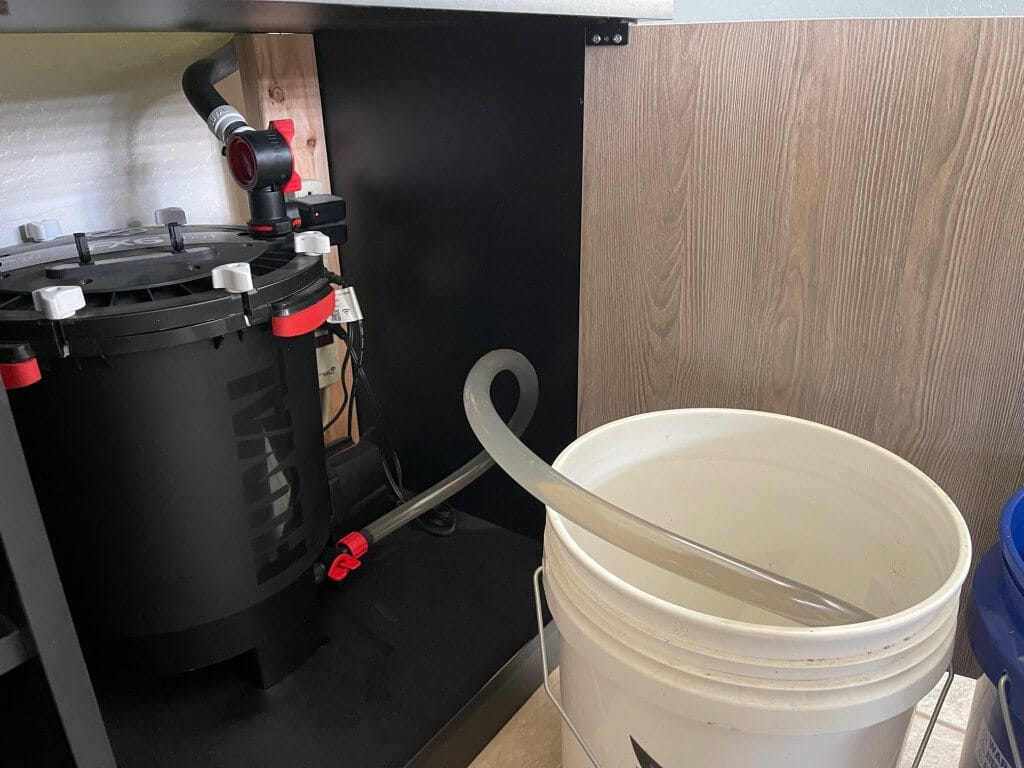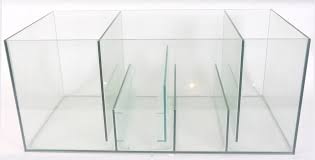Which Is Best? Sump or Canister Filter… Let’s Dive In!
When it comes to setting up any aquarium, whether it be saltwater or freshwater, filtration can be a very messy business; and getting it wrong can create far more of a headache than most people realise.
In this guide we shall outline the main differences between the two most common types of filtration found in the modern aquarium, External Canister Filters and Sumps, and the various advantages and disadvantages of both. This should help you make an informed decision as to what will be the best long term choice for your setup, and what will be the most convenient option.
Why is filtration so important?
In many ways, you can liken a tank’s filtration system to the circulatory system of a human body. The water is the blood, the pump is the heart, and the filtration is akin to the liver, spleen and kidneys, removing harmful toxins and waste from the water itself. As many of us are no doubt aware, when our toxin removing organs don’t work, we become very sick before potentially dying, and any aquarium with an unsuitable filtration system will behave in exactly the same way, with fish dying and system crashes. Always remember, you don’t keep fish, you keep water, so choosing the right setup from the outset is of utmost importance.
External Canister Filters

External Canister filters are relatively simple and easy to understand. They work by pulling in water via an internal pump, which then forces water through the various media found inside the canister and then back up to the tank.
The media found as standard inside most brands of canister is usually a mixture of mechanical and biological filtration, with many brands fitting as standard a UV filter to help control algae growth. But the beauty of canister filters is that the media can be customised. Carbon can be added in the form of media bags or pads, and phosphate removers such as Rowaphos are commonly added to canisters fitted to saltwater aquariums.
Installation is relatively simple, with all brands supplying everything you need inside the box, but take care to ensure that the canister is positioned where it will always sit before cutting the supplied pipes to the correct length.
Advantages
- Ease of installation
- Ease of maintenance
- Affordable
- Media can be customised
Disadvantages
- Clutters the tank with a heater and pipework
- Can be noisy
- Will not prevent film buildup at the top of the water column
- Filtration capacity can be insufficient for the more demanding Saltwater Setups
Sumps

A sump system, otherwise known as a refugium, is a secondary glass tank that sits below the main aquarium, taking water directly from a weir fitted to the aquarium itself.
Stage 1
The water then pours into an inlet chamber, where most of the mechanical filtration is found in the form of filter socks, specialised filter pads that remove toxins, and/or carbon and Rowaphos. This then flows through a water levelled opening to the secondary chamber, which is often significantly large.
Stage 2
In a saltwater aquarium, this second chamber is used primarily as the main area for biological filtration. For this purpose the chamber is often fitted with a refugium light, while the chamber floor can be filled with a deep sand bed and macroalgae. Deep sand beds provide a thick layer for denitrifying bacteria, reducing nitrate levels. Macroalgae grown under a refugium light, such as chaetomorpha and caulerpa also help to soak up nutrients, outcompeting any algae that tries to grow in the main tank. This helps to prevent pest blooms such as dinoflagellates, cyanobacteria and hair algae in the main display, that can ruin an otherwise pristine setup.
Stage 3
Finally, the water flows over through a levelled glass weir to the return chamber, which houses the aquarium’s main pump.
Adapting For Freshwater
For a tropical setup, the secondary chamber typically houses a mixture of mechanical and biological filtration, such as Biospheres and filter sponges, which can be easily accessed for cleaning.
For both setups, the secondary chamber is an ideal place to fit a protein skimmer, which functions akin to our kidneys, a venturi driven filter that removes free floating organics and toxins from the water column, storing them in a cup at the top which can then be emptied. We will touch on those in a future blog so keep your eyes peeled.
Summary
While sumps may seem a little more complicated, they provide innumerable benefits to any setup they are installed on, providing superior filtration capability as well as a space to fit the heater and any thermometer that might clutter up the main display. For this reason, they are the go to method of filtration for saltwater aquariums, and are usually fitted as standard in any manufacturer tank intended for saltwater aquarium use.
Sumps can be complicated to install however, even more so when a custom sump is required. Care must be taken to ensure all fittings are attached correctly and that the water level is adjusted so that the sump does not flood in the event of main pump failure.
Advantages
- Quiet
- Keeps the aquarium tidy
- Huge capacity for biological filtration
- Increases overall water capacity
- Provides superior water movement
- Weir keeps the surface clean of film
Disadvantages
- Complicated to install, unless fitted as standard
- Requires a main pump
- Requires a Refugium Light if macroalgae is to be used
So now the question beckons…
Which filtration setup do I choose for my tank?
The effectiveness and efficiency of both filtration methods will be largely dependent on the setup chosen for the aquarium; and depending on the setup, one may work better than the other in terms of both cost and effectiveness.
External Canister filters are a no brainer for most tropical tank setups, relatively inexpensive, easy to install, and often vastly superior to cheaper internal box filters. Bear in mind however that a sump may be superior in a heavy bio-load setup such a Cichlid or Oscar tank.
Saltwater tanks CAN be run with an external canister filter, but anything larger than a 100 litres may may require additional filtration capacity. Saltwater aquariums require good water flow as well as low nutrient levels, and for that reason sumps are generally regarded as superior in this application.
Conclusion
The filtration setup you choose will largely depend on what your aiming for in terms of results, as well as your budget. Always bear in mind that any expense will be worth it in the end, as choosing the right setup from the outset will provide your tank and livestock with a long and healthy life, and will save a lot of heartache down the line.


thanks for sharing wonderful information
Best Aquarium Filter